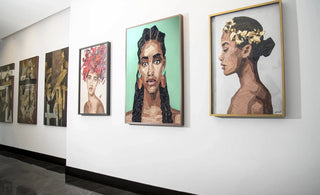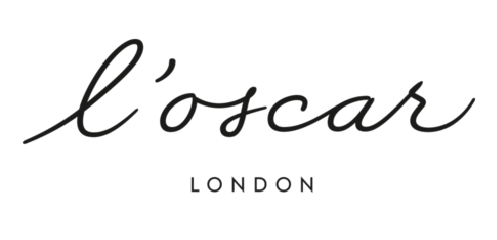
Put simply, contemporary artwork refers to art created by living artists. But how would you describe contemporary art? What styles of contemporary art are there? And who are some of the most prominent contemporary artists? That’s what we’ll be exploring today. Read on to learn all about contemporary art.
A Description of Contemporary Art
Contemporary art can be difficult to define in a single sentence - it encompasses a range of materials, methods, and concepts. There is some debate as to what time bracket constitutes contemporary art.
Some people define contemporary art as any artwork produced after the 1970s, but others will include any art produced after the 1950s in their definition of contemporary art. A simple definition of contemporary art would be: “Art produced in the latter half of the 20th century to the present day.”
What Styles of Contemporary Art Are There?
Contemporary art encompasses many styles and movements, from abstract art to street art. Here are some of the key contemporary art movements, showing the history of contemporary art and some contemporary art examples:
Abstract Art
Abstract art evolved in the late 19th century. It typically lacks traditional subjects, and instead, relies on colour and texture. It is all about freedom - artists are free to explore various forms, and focus on the process instead of the end result.
For example, Jackson Pollock’s Convergence (1952) epitomises spontaneous and subconscious creation, featuring a mix of colours and an overlapping of chaotic lines.
Pop Art
Pop art emerged in the 1950s. It is characterised by the use of bold colours and incorporates themes and imagery from popular culture. For example, Campbell's Soup Cans by Andy Warhol, or Roy Lichtenstein's 'Crying Girl'.
When you look at these, you see bold, bright colours, far from more traditional Renaissance-era artwork.
Minimalism
Minimalism emerged in the late '50s. This movement focuses on simplicity and reduction. Minimalist art often features lots of negative space and basic shapes and subjects. It can be characterised by a clean aesthetic - it strips away unnecessary details and focuses on the most important aspect of the art.
For example, Die Fahne Hoch! by Frank Stella (1959) features a lot of dark space - dark stripes and light lines in a geometric pattern, using the blank canvas space for the light lines.
Conceptual Art
Conceptual art emerged in the late 1960s and 1970s. It focuses on the concept behind the art - it doesn't have to be aesthetically pleasing. This movement challenges the traditional notions of art, and instead, evokes conversation and thought.
Some key conceptual artists include Lawrence Weiner, Sol LeWitt, and Joseph Kosuth. One of the most notable conceptual art pieces is "One and Three Chairs" by Joseph Kosuth (1965), featuring a physical chair, a photograph of the chair, and a dictionary defining the word 'chair'. This evokes thought and conversation, exploring the relationship between objects, language, and meaning.
Hyperrealism
Hyperrealism emerged in the late 20th century. This art style focuses on trying to match reality, with exceptional attention to detail. Hyperrealist paintings and artwork can often be mistaken for high-quality photographs.
This movement isn't to be confused with photorealism, which focuses on replicating photographs. Photorealism considers emotional and narrative elements too, usually adding some context to the art.
One of the most famous hyperrealist sculptures is Mask II by Ron Mueck, who also produced the famous 'Wild Man' sculpture. Mask II is a sculpture of the human face, with extreme attention to detail in the texture of the skin and the facial expression.
Street Art
Street art refers to artwork created in public places. It typically explores political and societal themes - for example, Banksy's street art explores themes such as capitalism, hypocrisy, and war.
This contemporary art form can incorporate a range of techniques, from graffiti to murals and large-scale installations. One of the most notable street art pieces is The Flower Thrower by the mysterious Banksy, who keeps his true identity hidden.
This piece depicts a man in a mask throwing a bouquet of flowers. It is located on a wall in Bethlehem, near the West Bank Barrier, symbolising peace amidst times of conflict.
Emerging Contemporary Artists
Aside from top industry names such as Andy Warhol, Banksy, David Hockney, Damien Hirst and Pablo Picasso, there are still many contemporary artists breaking through on the art scene.
For example, Hilary Pecis produces vibrant landscape and still-life paintings, portraying domestic scenes in a storybook style. Her work has begun to be showcased in notable venues such as Timothy Taylor Gallery in London, and the Rockefeller Center in New York.
Another name to look out for is Zara Muse. Her career has soared recently - she has held three exhibitions at Grove Gallery, Quantus Gallery and the Dorset Hospitality Group, and her reputation is significantly growing in the art world. Zara produces portraits of women, highlighting the beauty and resilience of women.
Some of her notable artworks include "Angelique," "Style," "Attraction," "Allure," "Belle," "Glamour," "Exquisite," and "Honey,". Salman Toor is another emerging contemporary artist. Based in New York, he produces small-scale portraits that reflect the lives of queer men of colour.
Contemporary Art Investment
Contemporary art investment involves purchasing artwork in the hope that it appreciates in value - and selling it for a profit later down the line. It is considered a medium to long-term investment, as it can take years before the value of artwork increases.
From 1995 to 2020, contemporary art showed a 14% annual price appreciation. When you invest with Grove Gallery, you can expect returns of up to 12% per year. 'Sage Blue Marilyn' by Andy Warhol sold for a staggering $195 million back in 2022, highlighting the huge returns that artwork can produce.
If you want to begin investing in contemporary art, download our art guide and get started with Grove Gallery.






